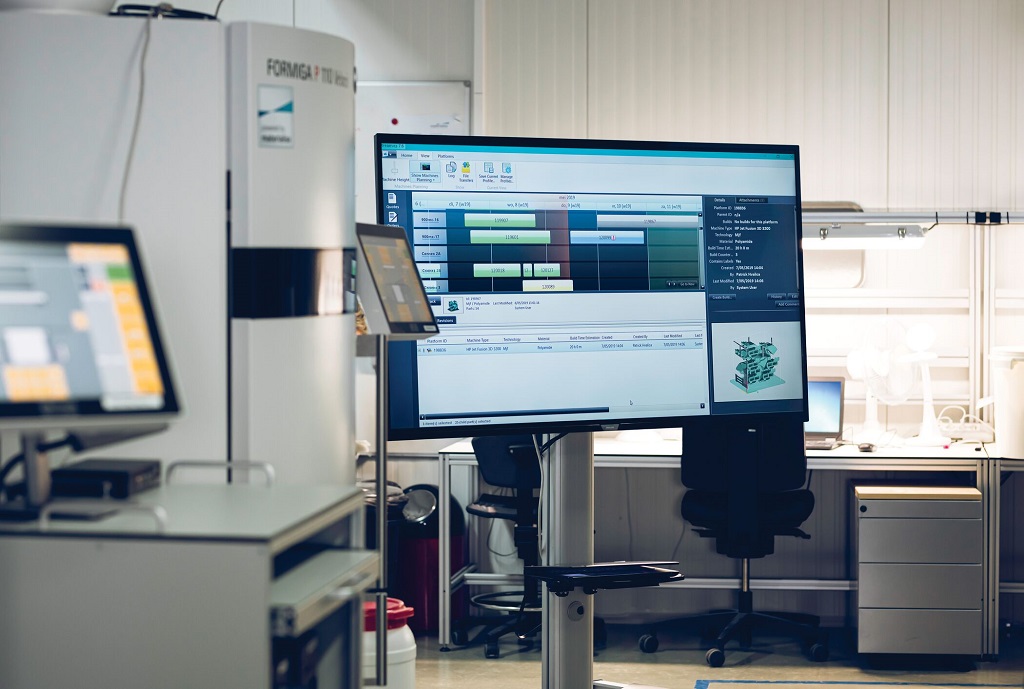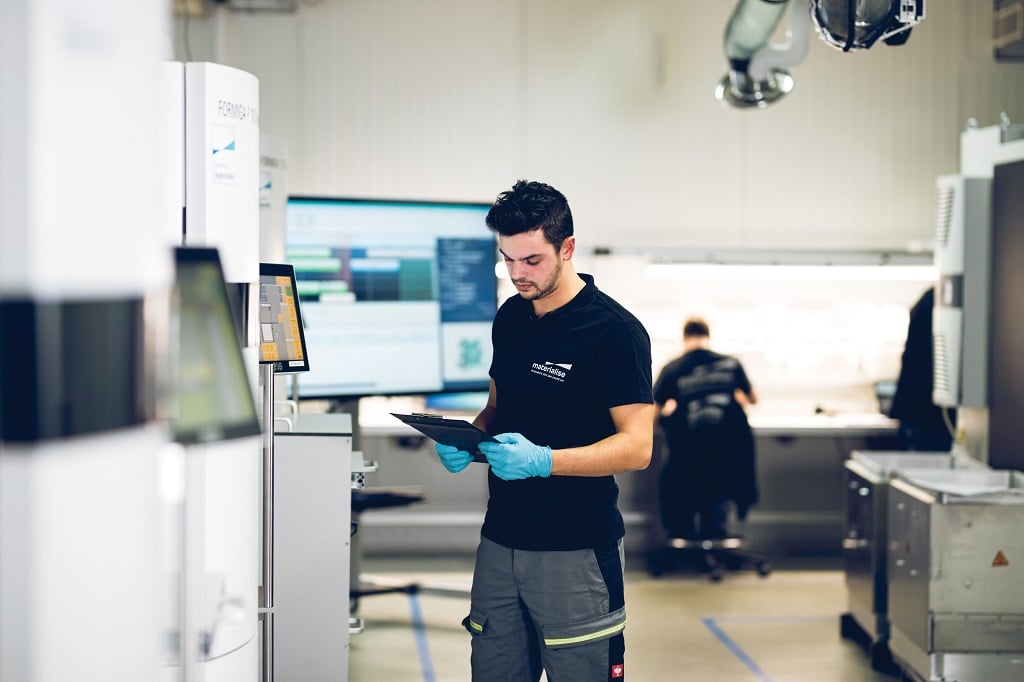
The Vice President of Materialise’s software department discusses ongoing partnerships with other members of the 3D printing community to standardize machine language and bring the value of printer data to users.
We may not pay them attention each day, but every time we plug in phone chargers or travel internationally, we are interacting with standardized components. Imagine traveling internationally by train in the mid-1800s. Europe hadn’t introduced standardized railways yet, so workers had to put in extra time and effort to transfer travelers and goods from one train to another at every country border.
Then, because of the question “how can we do this better?”, the standard railroad was born. One agreed-upon train track structure meant that all trains could seamlessly travel between countries. A Dutch train could be in France. An Austrian train in Italy. Suddenly, travel and shipments quickened. Trains were more predictable, ultimately introducing standard time and time zones to synchronize train stations. People recognized the issue and worked together to address it. And, because of this one adjustment, the world changed fundamentally for the better.
Today, we face a similar challenge in the 3D printing industry when it comes to machine languages. Each OEM has its own machine language, so in order to reveal real-time printer data, we need to translate that language into one we can easily understand. Just like moving cargo from one train to another.
But what if we ask ourselves the same thing the train industry did a century and a half ago. How can we do this better?
I am confident that all members of the additive manufacturing (AM) community would agree that one standard language would push the entire industry forward by leaps and bounds. Software and hardware would unite like never before. At the minimum, this means more data for machine manufacturers and operators alike to better understand the performance of our machines. The other end of that spectrum is yet to be known. But what we are sure of is that it will make our industry faster, more reliable, and full of opportunity.
One step at a time
We’re already well into Industry 4.0, the fourth industrial revolution. With this revolution came the rise of smart factories, internet of things, and artificial intelligence. We are integrating these concepts into AM factories, such as automated workflows with software, but introducing industry standards will enable even more connections between software and hardware. Then, we will experience truly digitalized factories. There is already ample proof of how standards benefit manufacturing.
“As a company with almost 100 years of manufacturing experience, we’ve observed the opportunities brought about by implementing industry standards with our other solutions,” says Dr. Damien Buchbinder, Head of Product Management, Additive Manufacturing at Trumpf. “Now is the time that the 3D printing industry adopts standard machine languages. Standards strengthen industries.”
How exactly do standards strengthen industries? Consider how partnerships will evolve as an example. Standards create shared best practices. Say two AM companies plan to work together on a design for a customer. A common workflow saves the time and effort of each partner clarifying or changing their practices for the other, just as a shared railway eliminates cargo transfer. Companies already understand each other’s processes and can skip that time-consuming introductory phase to begin innovation immediately.
Let’s turn to a specific issue in the AM industry that can be solved with a standard language. Currently, we experience a gap between software and hardware that limits the information users see regarding their printers. The parts are being printed, but the software can’t access the necessary data to share real-time statuses with the user. A standard language is the bridge needed to connect this gap.
“EOS has been shaping the industry alongside AM’s earliest innovators since the very beginning,” shares Mirco Schöpf, Product Line Manager Connectivity & Automation at EOS. “We recognized the impact that open machine communication could have on propelling our 3D printing further into Industry 4.0 and are happy to provide our unique expertise and collaborate with other industry leaders.”
We cannot achieve this alone, so we’ve begun by working with others in the 3D printing industry, such as Trumpf and EOS, to incorporate standardized machine languages into our existing workflows and encourage others to do the same. While our software team worked to understand and support these languages, namely OPC UA and MTConnect, our OEM partners opened up their ecosystems to make machine data available via these shared languages.
“There’s a need within our industry to create direct integration between software and hardware,” adds James Berlin, Senior Software Product manager at Stratasys. “As a community, we’re uniting to open our additive manufacturing ecosystems to make it easier to share machine data. This will be the catalyst that empowers 3D printing production to become even faster and more essential for manufacturers.”
If printers could talk

Our first initiative made possible by standard languages is machine monitoring. Currently, a huge effort is required for software developers to understand each individual machine language, which is why we have been unable to access and share real-time printer statuses until now. Our partners have agreed to open their machines up to standard languages for us to create the machine monitoring feature in our software.
Software is like the dashboard of your car and hardware is the engine. As the hardware works tirelessly on moving the project forward, the software shares details on the machine’s performance in a clear, comprehensive view. Production managers will know exactly how each machine is performing and can immediately optimize their operation’s schedule based on this data displayed on their production management software.
This data isn’t just an improved view of printer statuses, it’s a way to change the way 3D print factories work. Based on printer information stored over time, production managers can run only the most successful build parameters for the quickest, highest-quality results possible. They can expect freed up printer time and space, increasing their production capacity. Scaling services is a goal for many in the AM industry, and machine monitoring will be a major push to make it a reality for many.
This initiative is not as simple as a new product release. It’s a strategic plan that we envision the entire community uniting over. This is just the beginning of a new way of working in our industry, and we welcome all to join us in implementing standard machine languages. Together, let’s answer the question “how can we do this better?”.
